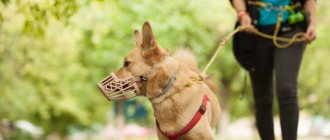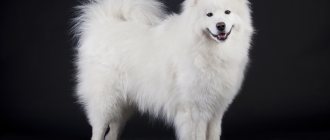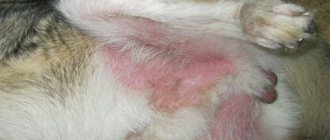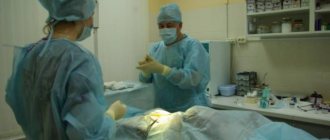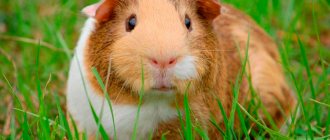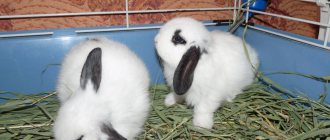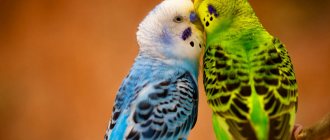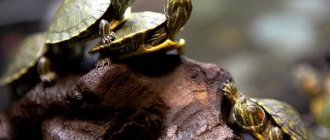Place to sleep and relax
First of all, you need to provide a place where your new pet can rest, sleep or just lie down. Some owners initially use carriers, which serve as a home in the first days and provide peace of mind for their pets on future trips.
When you take your puppy to a new home, it is useful to take with you a piece of bedding or fabric that smells like mom. You can also use a heating pad or warm water bottle to help keep the puppy warm without the mother dog.
Whatever your pet’s place, always keep the bedding clean - regularly shake it out, wash it or replace it with a new one.
Moving a puppy
Caring for a puppy for 2 months. By 2 months, puppies are ready to go to a new home away from their mother and their siblings.
We talked about how to choose a place to purchase a puppy in the article “Buying a Puppy.”
The best place to buy is a professional club with a good reputation. The puppies in such clubs are purebred, have all the documents, are kept in excellent conditions, and are treated for parasites.
To care for your puppy in your home, you will need to organize a place for him to sleep and feed. Buy a carrier to transport your dog. Take it for growth, taking into account the future size of the maturing puppy. You will need to take your puppy to the veterinary hospital for vaccinations and routine examinations more than once.
Buy food and water bowls. Wash them thoroughly, change the water in the bowl, it must be fresh. Choose a cozy bed for sleeping. Ask the breeder to bring with you bedding with the scent of the puppy’s mother, this will make it easier for the puppy to adapt to the new place. Remember, the process of moving to a new place and separation from its mother is stressful for the animal; try to make the process of getting the puppy accustomed to your home as comfortable as possible.
Find out what kind of food your puppy was fed from the breeder, ask about the feeding regimen and serving size. Buy your puppy a variety of toys and balls, choose products made from safe materials, without small parts that the puppy can swallow.
Find out if the puppy is toilet trained. Remember that you can take your puppy out for a walk only after all vaccinations have been completed and quarantine has been completed.
Set up a special place in the apartment where the puppy can relieve himself, lay a diaper or newspaper there. You can purchase a special tray. Teach your puppy to wear a special diaper, wherever he is at that moment, spread the diapers in different places in the house.
Then place the sheet on the tray. This will make it easier for him to understand what is required of him. Unfortunately, even if a puppy goes to the toilet in one specific place, this does not mean that he will not make a puddle in another place. Therefore, at this time it is better to remove the carpets in the apartment and cover the furniture with film.
Paws and claws
In order for your dog to get used to caring for his nails, they should be trimmed with a special nail clipper from an early age. You can start with a few millimeters once a week and then increase the length as recommended by your veterinarian.
In the winter season, it is recommended to take your pet for a walk in special boots that protect the paw pads from reagents that can cause irritation and itching. In addition, you can use special wax for paws.
Caring for puppies after birth or how to care for very small puppies?
First of all, you need to allocate a special place where the mother and her babies will be. You should equip it with everything necessary, make soft warm bedding, prepare an electric heating pad, it may be needed to warm the puppies, an electric scale for weighing the puppies, as well as a dog milk replacer in case the milk is not enough or the puppies are so weak that They will not be able to suckle milk on their own and will have to be given a milk replacer from a syringe.
Be prepared that in the first days of life of newborn puppies you will need to constantly be close to the dog and its puppies, this is especially true for a young dog that is bringing a litter for the first time. To do this, take a vacation and ask for help and share the schedule of care and control of the puppies and their mother with someone from the household.
If the dog is experienced, then caring for newborn puppies will not require much effort and attention from you. Dogs that are not mothers for the first time are distinguished by a very attentive and caring attitude towards puppies; they lick them especially carefully and regularly, which is very important for the life of newborn puppies. The fact is that licking stimulates blood circulation, digestion and bowel movements, as well as breathing of the newborn puppy.
Newborn puppies cannot defecate on their own; it is the licking of the mother dog that stimulates this process. In the first days of the puppies' life, they lie clean and dry precisely thanks to such careful care on the part of their mother. If the dog is inexperienced or is in a weakened state after a cesarean section and cannot lick the puppies often, then you will have to periodically wipe the puppies’ bellies with a damp cloth and thus stimulate their vital processes.
From the first days of life, blind and deaf puppies are able to suck milk, making pushing movements with their front and rear paws; these actions create a massage of the nipples and stimulate milk production. It is very important that puppies first feed is colostrum. This is the first portion of milk that a dog produces during the first 3-5 days. The composition of colostrum has unique qualities; this milk contains nutrients and immunoglobulins that protect the weak organisms of puppies from various infections.
The sucking reflex is fixed from birth; puppies do not need to be taught this. However, there are situations when puppies are so weak that they cannot suck on their own or stay on the nipple. Then you need to help, hold the puppy, open his mouth and put the nipple in his mouth, first you need to massage the dog’s mammary glands so that colostrum is released from the nipple.
The smell of colostrum will trigger the puppy's sucking reflex. If the puppies are very weak and are not able to suckle on their own, then they will have to be syringe-fed every 2 hours with a dog milk replacer. The first volumes of syringe feeding are 0.5-1 ml of milk; upon reaching a two-week period, the puppy can consume 5-10 ml of milk or milk replacer.
It is very important to monitor the weight of babies. Starting from the second day of life, puppies must be weighed daily and must gain weight daily. If this does not happen, it means the puppies are not getting enough nutrition, the mother does not have enough milk and you need to additionally feed them with milk or a milk substitute from a syringe.
Keep an eye on your dog's mammary glands; if there is an excess amount of milk, she may develop mastitis, which can be identified by swollen, hard and painful glands, they are hot and have a lumpy surface. At the first signs of mastitis, it is necessary to lubricate these glands affected by mastitis with camphor oil and perform a gentle massage to get rid of congestion in the mammary gland. If this doesn't help, be sure to contact your veterinarian!
Separate care should be taken to maintain warmth in the area where the puppies are located. Newborn puppies cannot control their body temperature and are susceptible to hypothermia. Puppies are warmed by their mother with her body, and puppies also warm each other by being in close contact. During the period when the mother is absent, she is on a walk or has gone to feed, the puppies need to be provided with additional heating, for this you need to use an electric heating pad.
Caring for newborn puppies requires constant monitoring. On days 7-10, you need to start trimming the puppies’ nails, just a little bit, just sharp hooks. Nails need to be trimmed once a week. This must be done so that the puppies do not injure the delicate skin of the mammary glands of the mother dog with their claws.
You also need to be especially careful to ensure that there is no inflammation of the navel stump in puppies. To do this, you need to lubricate your navel with brilliant green twice a day, morning and evening.
As puppies grow, they become more active; if at first they only sleep and eat, then from the third week of life, puppies begin to actively walk, defecate independently, play and fight with their brothers and sisters.
At the fourth week, the puppies have their first teeth, which means it’s time for complementary feeding. Gradually, the share of mother's milk in the puppies' diet will decrease; milk will be replaced by other foods.
The transition from milk to other products must be done gradually, and the condition of the puppies must be monitored. If the puppies are still weak, do not rush to switch them to another food. A gradual change in diet should take place in stages, first add one complementary food a day so that the puppy gets used to it, look at his reaction, then twice a day, then three, four, five, six until the mother’s milk is completely replaced.
Wool
Grooming is an equally important dog grooming ritual. Experts recommend using special combs selected according to the individual needs of each puppy: the length and type of coat varies among dogs of different breeds, and therefore requires different care.
You should not frequently wash your dog with shampoo - this can lead to the loss of a special natural protective layer, which creates a kind of barrier to infections and moisture and envelops the hair, giving it a healthy shine. It is better to use special products only when the pet is dirty in the mud.
Veterinary examination of a puppy
But this is not the only thing puppies are accustomed to; care and vaccinations play a key role in maintaining the health of dogs. Therefore, dogs are taught to visit the veterinarian from a very early age. The first vaccinations should be given at the age of 2 months. Only healthy puppies are vaccinated; the puppy must be dewormed 15 days before vaccination; this is done before each vaccination.
There are two types of vaccinations - single vaccines (against one type of disease) and complex vaccines (against several diseases, for example, plague, rabies, hepatitis, enteritis, etc.). Complex vaccines are preferred.
After vaccination, a very important period of quarantine begins, which lasts about two weeks. During this period, the puppy’s body is weakened and susceptible to diseases, so it is necessary to protect the puppy from all potentially dangerous places of infection with any diseases. The puppy may have a fever, weakness, and diarrhea.
After 3 weeks, a secondary vaccination with the same vaccine takes place, this time the puppy survives it much easier. Again, you need to wait for a two-week quarantine and only then are you allowed to walk the puppy. The next vaccination period is 6 months, a rabies vaccination and a complex vaccine against several diseases are given. At this age, it is prohibited to vaccinate; if a dog’s teeth change, you need to wait until all the teeth have changed, only then vaccinate. The third vaccination is required at one year of age with a complex vaccine. And then vaccination is carried out on an annual basis with the same complex vaccine.
After the second vaccination and the quarantine period, you can start walking the puppy. At first, you need to walk the puppy often, 6-7 times, in the morning after sleep, before bed, after each meal.
The puppy should get used to going to the toilet outside, so don’t expect piles and puddles to immediately disappear from your apartment. These little troubles can last until the dog is 6-7 months old. Over time, the number of walks can be reduced, the animal will get used to being patient.
Ears
Care for your pet's ears regularly. Veterinary experts do not recommend using cotton swabs for cleaning, as they can damage your pet’s inner ear and form a cerumen plug. Much more effective and safer are special lotions that help remove dirt. A few drops are injected into the animal's ear canal, then the dog shakes its head, and all the dirt accumulated inside ends up on the inside of the ear. All you have to do is wipe it with a napkin. If your puppy constantly shakes his head, scratches his ears, and you see a large amount of dirt inside the sink, you should contact a veterinarian.
What disappointments can you expect when choosing the wrong breed for you?
People often experience great difficulty in the following situations:
- They take a dog of a long-haired breed (Yorkie, Pomeranian or Pekingese), and then they can’t cope with taking care of the coat on their own and take it to a salon where they simply cut the dog’s hair. If you don't know how and don't want to deal with quite complex coat care, take a smooth-haired dog.
- Take a wire-haired dog (terrier, schnauzer or dachshund) and forget about trimming. Trimming is the process of manually plucking wire-haired dogs with your fingers or a special trimming tool. A dog needs hygienic trimming at least twice a year, and a show dog is prepared for every show. You cannot cut wire-haired dogs; the hair becomes soft and the dog will develop skin problems.
- People take a puppy when someone in the family is allergic to animals. You can even be allergic to naked dogs. First, go to visit the owner of this breed. Or take it for foster care. Be sure to visit an allergist; it may not be the dog or the problem can be treated.
- Busy people take an active working or sporting breed puppy. Now this problem is acute for owners of northern sled dogs, especially huskies. Dogs suffer from loneliness, boredom and lack of exercise. They begin to destroy apartments and run away for walks. The same is with service and hunting breeds. Watch the wonderful movie "Marley and Me."
- They think that small dogs don't need to be trained. Did you know that dachshunds, cocker spaniels and small decorative breeds are the leaders in the number of bites of their owners or members of their family. In addition, these dogs often bite children.
- If you work and cannot handle a puppy, then adopt a dog from a shelter. You can also look at help groups for certain dog breeds. You can take an adult dog there. Often such dogs lose their owner due to an accident. Sometimes dogs are given away after finishing their breeding career.
Parasite prevention and vaccinations
Prevention of external and internal parasites is one of the most important aspects of dog care. The constant presence of worms and fleas leads to a weakening of the body's immune defense, which is fraught with viral infectious diseases. In addition, with a massive flea infestation, the dog may develop anemia. With an advanced helminthic infestation, the pet constantly suffers from increasing intoxication.
Flea prevention is carried out once every three months, regardless of the frequency and place of walking the dog. During cold weather, prevention is carried out less frequently if the dog lives in a region with harsh winters. Almost all flea drops protect pets from ticks, but the period of preventive action can vary from 1 to 2 weeks.
Prevention of worms is carried out once every 3 months, regardless of the time of year, region of residence and other conditions. A three-month period is considered a “red line”, after which helminthic infestation becomes dangerous to health . It is important to understand that you cannot protect your dog from worms because it walks outside, communicates with its relatives, chews sticks and eats grass. However, all parasites have a reproduction cycle!
Note! Preventive treatment once every 3 months interrupts the reproduction cycle of the most common helminths.
If for some reason the puppy has not been treated for worms quarterly, the worm infestation is treated. Treatment differs from prophylaxis by repeated administration of the drug after 7–10 days. If the puppy is very small and infected with worms, treatment is best carried out under the supervision of a veterinarian, as there is a possibility of intestinal blockage or perforation.
At the age of 3–4 months, 2 weeks after treatment for worms, the puppy must receive its first vaccinations. Depending on the region of residence, the pet must receive a set of mandatory vaccinations.
These include:
- Rabies.
- Distemper of carnivores.
- Parvovirus enteritis (can vary in strains).
- Leptospirosis.
- Viral hepatitis.
- Parainfluenza (may vary in strains).
So-called optional vaccines include drugs to prevent diseases that are common in a particular region.
Basic vaccination is carried out in two stages. First, a comprehensive vaccination is given, after which the baby receives a rabies vaccine. Depending on the manufacturer's recommendations, revaccination is carried out after 21–40 days. A full immune response is developed within 3-4 weeks, after which the dog is considered vaccinated. The next revaccination is carried out a year later.
Vaccination is a preventative measure that does not guarantee that the puppy will not get sick. Depending on the quality of the vaccine, there is a 3-30% chance of contracting the virus or infection for which the puppy is vaccinated. Statistics show that vaccinated animals more easily tolerate the viral diseases against which they are vaccinated.
What to feed a puppy
Depending on what breed the puppy is, feeding recommendations vary. Food should be rich in proteins, including meat, vegetables (grated carrots, apples), milk and fermented milk products (cottage cheese). It is recommended to train your dog to eat cereals. The portion size is adjusted depending on whether the dog eats everything or not. You can learn more about feeding features. Depending on the breed of the puppy, feeding recommendations vary. Food should be rich in proteins, including meat, vegetables (grated carrots, apples), milk and fermented milk products (cottage cheese). It is recommended to train your dog to eat cereals. The portion size is adjusted depending on whether the dog eats everything or not. You can learn more about the features of feeding here, and here how many times a day this should be done.
